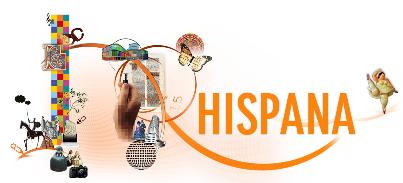Mostrar el registro sencillo del ítem
Authority, Sexual Maturity, Homosexuality, ‘Canes’, ‘Cudgels’, ‘Swords’ and ‘Staffs’ in Nathaniel Hawthorne’s «My Kinsman, Major Molineux»
| dc.contributor.author | Ruiz Más, José | |
| dc.date.accessioned | 2012-04-27T11:53:48Z | |
| dc.date.available | 2012-04-27T11:53:48Z | |
| dc.date.issued | 2004 | |
| dc.identifier.issn | 1578-3820 | |
| dc.identifier.uri | http://hdl.handle.net/10835/1332 | |
| dc.description.abstract | In this paper I endeavour to revise the psychological approach employed by many literary critics to analyse Nathaniel Hawthorne ’s short story “My Kinsman, Major Molineux ”. I pay special attention to the relevance of the symbolism of the names of the tools and weapons which the different characters of the story brandish to emphasise their sense of authority, sexual maturity and adulthood in public. The images of these weapons and tools appear to represent Freudian phallic symbols, a fact that contributes to reaffirming the validity of the psychological approach for this story. This present study concentrates on the relationship between the theme of authority and the theme of adulthood, as well as on the analysis of the psychological evolution that the protagonist, Robin, goes through in order to achieve what both Hawthorne and the very protagonist believe sexual maturity and adulthood consist of. I also speculate on the possibility that, consciously or unconsciously, Hawthorne could have had the idea of ridiculing the image of the uncle figure in “My Kinsman, Major Molineux ”. Some biographers and critics have said that Hawthorne went through the humiliation of being sexually abused by his uncle Robert Manning when he was a young boy. Hawthorne could have used this short story to take his personal revenge. En este artículo se pretende hacer una revisión del enfoque psicológico utilizado por muchos críticos para analizar el cuento “My Kinsman, Major Molineux ” de Nathaniel Hawthorne. Se presta especial atención a la importancia del simbolismo de los nombres de las herramientas y armas que empuñan los distintos personajes del cuento para reafirmar públicamente su sentido de autoridad, su madurez sexual y su condición de adulto. Las imágenes que parecen transmitir tales armas y herramientas representan símbolos fálicos, un hecho que contribuye a confirmar la validez del enfoque psicológico para este cuento. El presente estudio se centra en las relaciones existentes entre el tema de la autoridad y el tema de la madurez, así como en el análisis de la evolución que su protagonista, Robin, sufre hasta alcanzar lo que tanto para Hawthorne como para el mismo protagonista constituye la madurez sexual y cronológica. Asimismo se contempla la posibilidad de que a nivel consciente o inconsciente Hawthorne pudiera haber tenido la intención de ridiculizar la figura del tío en “My Kinsman, Major Molineux ”. Algún biógrafo y crítico ha afirmado que el joven Hawthorne llegó a sufrir la humillación de sufrir abusos sexuales por parte de su tío carnal Robert Manning y que podría haber hecho uso de este cuento para vengarse de la afrenta. | es_ES |
| dc.language.iso | en | es_ES |
| dc.publisher | Universidad de Almería | es_ES |
| dc.source | Odisea: Revista de Estudios Ingleses. Número 05, Enero-Diciembre 2004 | es_ES |
| dc.subject | American literature | es_ES |
| dc.subject | Nathaniel Hawthorne | es_ES |
| dc.subject | “My Kinsman, Major Molineux” | es_ES |
| dc.subject | homosexuality | es_ES |
| dc.subject | sexual maturity | es_ES |
| dc.subject | father figure | es_ES |
| dc.subject | phallic symbols | es_ES |
| dc.subject | masculinity | es_ES |
| dc.subject | Literatura norteamericana | es_ES |
| dc.subject | homosexualidad | es_ES |
| dc.subject | madurez sexual | es_ES |
| dc.subject | figura paterna | es_ES |
| dc.subject | símbolos fálicos | es_ES |
| dc.subject | masculinidad | es_ES |
| dc.title | Authority, Sexual Maturity, Homosexuality, ‘Canes’, ‘Cudgels’, ‘Swords’ and ‘Staffs’ in Nathaniel Hawthorne’s «My Kinsman, Major Molineux» | es_ES |
| dc.type | info:eu-repo/semantics/article | es_ES |
| dc.relation.publisherversion | http://www.ual.es/odisea/Odisea05_RuizMas.pdf | es_ES |
| dc.rights.accessRights | info:eu-repo/semantics/openAccess | es_ES |
| dc.identifier.doi | http://dx.doi.org/10.25115/odisea.v0i5.122 |









